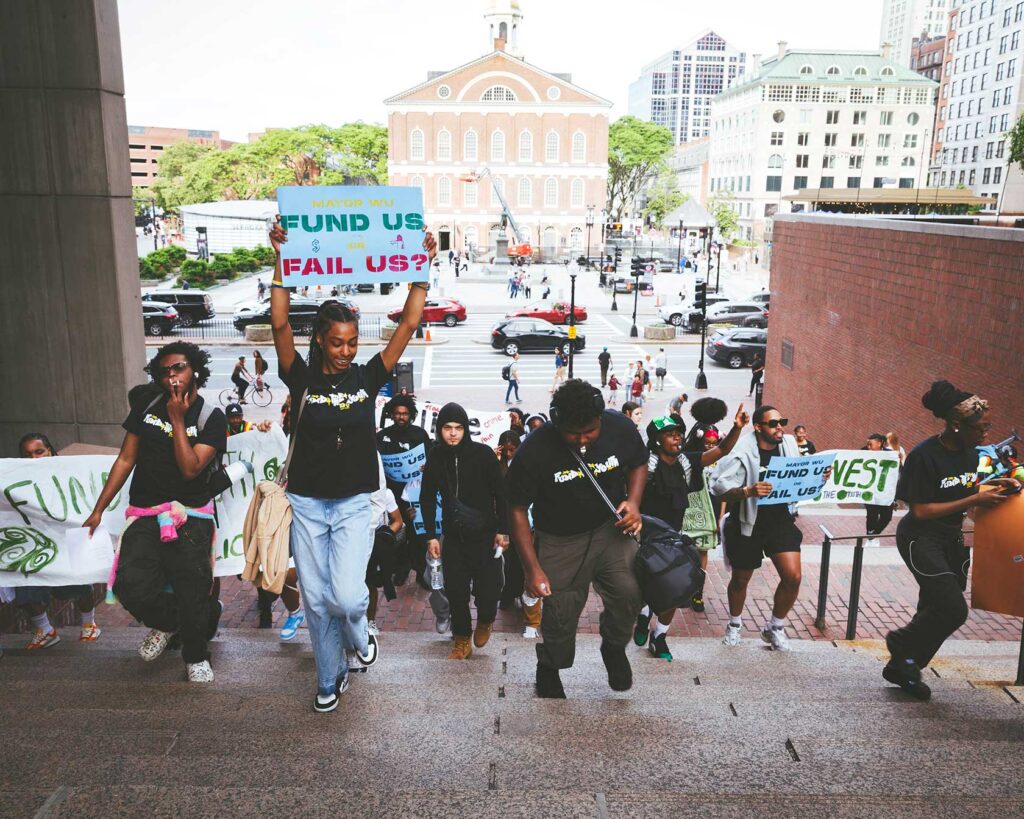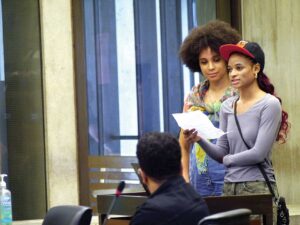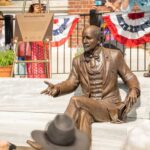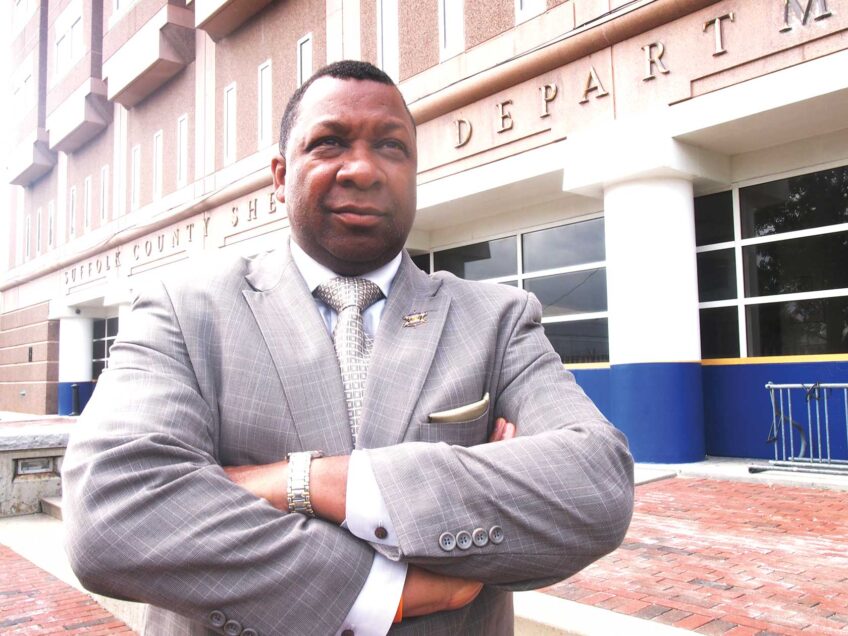Students weigh in on BPD budget
Ask for less policing, more community focus

Five years ago, when the Minneapolis police killing of George Floyd sparked anger and a drive for police reform across the country, activists and elected officials in Boston were determined to redefine public safety in Boston.
In the ensuing years, city councilors, including then at-large Councilor Michelle Wu, called for a reallocation of resources away from policing and into community-based organizations, with many taking aim at the ever-expanding police overtime budget.
But after a blistering battle last year in which Wu vetoed a $3 million cut to the Boston Police Department’s then $470 million budget, councilors this year appear to have shied away from the police budget, leaving intact the more than $480 million the Wu administration has allocated to the BPD.
Last week when students from Community Academy, a public school in Jamaica Plain, called on the council to spend more on prevention and less on policing, their appeal seemed to have a negligible effect on the city’s budget process.
“I’m asking you to have to courage to do something different,” said Adama Bah, a ninth grader. “Invest in healing. Invest in us.”
Grant recipients
During the hearing last Thursday, Bah and her classmates were outnumbered by representatives from the dozens of nonprofits that receive funding through the state’s Shannon Grant program, which enables police departments to channel $35,000 grants to community-based organizations.
This year, the $1.7 million grant is doling out $45,000 grants to six Boston Police Department units, including the Youth Violence Strike force (the gang unit), the Homicide Unit, and the BPD School Police. In all, city departments and the Suffolk County District Attorney’s Office claim a third of the grant money.
Representatives of the nonprofits who receive the $35,000 grants said the funding is a lifeline.
“The funding enables us to create pockets of stability for young people,” said Rita Lara, executive director of the East Boston group Maverick Landing.
The funding encourages youth-serving organizations to work with police. Joseph Funari, who heads the Chelsea office of the group Roca, said the funding has helped the group form partnerships with law enforcement to identify “high-risk youth.”
In her letter to the council, Wu emphasized the grant’s’efficacy in fighting gang violence.
“The grant would fund regional and multi-disciplinary approaches to combat gang violence through coordinated prevention and intervention, law enforcement, prosecution, and reintegration programs,” her letter reads.
Critics of the Shannon grant argue that the funding arrangement discourages groups from criticizing police.
“It essentially makes it so that the groups are beholden to law enforcement and can’t speak out publicly,” said Fatema Ahmad, executive director of the Muslim Justice League.
By casting youth work as anti-gang violence work, the grants also feed into a public perception of Boston-area teens as gang members. The Community Academy teens said they’re often unfairly targeted by the Youth Violence Strike Force, a police unit that has a reputation for harassing teens.

Students from Community Academy, a public school in Jamaica Plain, called on the City Council to spend more on prevention and less on policing. “I’m asking you to have to courage to do something different,” said 9th grader Adama Bah (wearing hat). “Invest in healing. Invest in us.” PHOTO: YAWU MILLER
“We don’t want to live in neighborhoods where police are always checking us, always questioning us just because we’re Black,” said Bah, the ninth grader. “Even when you’re not in a gang, they say you are.”
In stark contrast to testimony from the youth-serving organizations, the Community Academy students spoke of illegal searches, harassment by officers in the Youth Violence Strike Force and generally negative interactions with police.
Speaking after the hearing, Kai, a senior, described an incident where police surrounded a car he and his friends were riding in and conducted what he said was an illegal search of the car.
“They didn’t have probable cause,” he said.
While under the 4th Amendment protections against illegal search and seizure, police can only conduct a search if they have probable cause to arrest a suspect, teens in Boston say they are often searched by police as a matter of course.
Aniyah Stephens, a senior, described an incident where one of her friends was searched after police said they saw someone smoking in the park where they were sitting.
“It felt like they were just showing us they had power over us,” she said.
Declining crime rates
While some in the city say there’s been an uptick in youth violence, overall violent crime in Boston has been steadily declining for decades. Last year, the city’s murder rate hit its lowest point since 1957. In 2006, the violent crime rate in Boston was 1,339 incidents per 100,000 people. In 2024, it was 462 incidents per 100,000 people — about a third of what it was 20 years ago. Yet the number of sworn officers on the force has remained steady — there were 2,035 in 2004 and there were 2,139 officers serving in 2024, despite the precipitous drop in crime.
“If we want the number of police officers to be proportionate to the amount of crime in the city, we should be shrinking the number of officers, not increasing it,” said Kendra Lara, a former city councilor and former street worker who now heads Sisters Unchained, a group that works with women and girls affected by incarceration.
Aside from the Community Academy students’ testimony and a demonstration organized by the Youth Justice Power Union, an organization that does not receive Shannon Grant funding, there was little in the way of public opposition to the police budget this year. At nearly half a billion dollars — with overtime factored in, probably more — the police budget dwarfs the city funding spent on youth serving organizations.
Lara says the city’s over-reliance on police funding is not an effective way to prevent crime. Multiple studies have shown lower crime rates in cities with higher rates of investment in community-based institutions, she says.
“The data shows it’s more effective to make investments in community-based organizations than it is to keep inflating police budgets,” Lara said. “Safe cities are safe because of investments in communities.”







